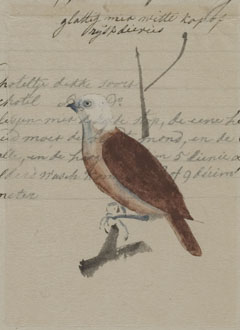Japanese demands > Journey to the court

The Shogun required the VOC to send a delegation regularly to his court in Edo (present-day Tokyo) to show their allegiance. The trip was called the ‘Journey to the Court’. The first of these trips took place in 1609 and the journey became an annual event from 1633 on. The Dutch delegation consisted of the chief, the highest ranking merchant, other company staff, a surgeon, litter bearers, interpreters, horses and luggage. The whole trip took about three months, of which two to three weeks were spent in Edo. In total, the party travelled a distance in excess of 2000 kilometres.
On arrival at the Shogun’s palace, the chief had to wait for ages before being allowed to appear in the ‘hall of the hundred mats’. The Shogun remained invisible behind a screen, never addressing his visitor directly. The chief would present the gifts and throw himself to the ground in homage to the Shogun. Once the gifts had been handed over to the Shogun, the daimyo, Japanese liege lords in the Shogun’s entourage, also received presents. At the end of the visit, the Dutch received a traditional present: thirty silk kimonos, so-called imperial coats.
After 1790, the VOC decided to undertake the journey only once every four years because of the great expense. From that time on, the delegation was limited to the chief, the surgeon and the warehouse manager, but the whole train of accompanying Japanese interpreters, security guards, officials, attendants and bearers still numbered a few hundred men. All the same, the Shogun still received gifts every year, mostly through the intermediary of interpreters.
The last of the total of 186 journeys to the court was undertaken in 1850.
Read more about:
the Verenigde Oost-Indische Compagnie (United East India Company)
the V.O.C. in Japan
the demands
